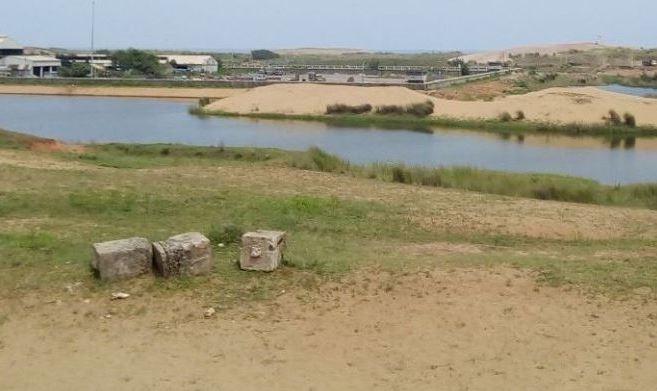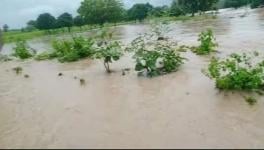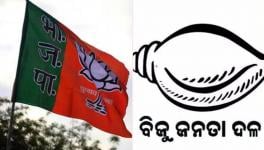Monazite Mining in this Odisha Block is Giving Locals Fatal Kidney Disease

Image Courtesy: The Wire
In Badaputti village in Chhatrapur block in Odisha, chronic kidney diseases occur much more frequently than anywhere else in the country. Of the total population of around 3,000, over 200 people suffer from kidney ailments, and 70 have died from kidney failure in the last three years. The rising number of cases in the Chhatrapur area corresponds to the beginning of the operations of a monazite mining plant located a few hundred metres away.
For the residents of the area, this has translated into massive expenditure on health care – forcing them to sell their assets, withdraw their children from schools so that they can earn, and take steeply priced loans, putting them knee-deep into debt. The story of disease and debt has become so common that there have been cases of people committing suicide soon after diagnosis, to save their family from the inevitable struggle.
A fact-finding team consisting members of the Citizens’ Research Collective carried out investigations and recently published their report.
Who is behind the operations?
The mining, being carried out by Indian Rare Earths Limited (IREL), a Government of India undertaking, has faced little deterrence despite the alarming number of kidney illnesses being linked to their operation.
IREL was first allocated land in the area in 1979 for beach sand mining. When the plant was first set up, the locals were hopeful of a boost in the economy and generation of jobs. However, not only no significant jobs were offered to the people, but their land was declared as the government land, while no proper compensation was given. The ones who could prove their ownership over the land were compensated for the cash crops they had planted, and not for the land itself. Those, who were hired for manual labour, were later replaced by workers being brought in from outside.
Apart from being deprived of their land and jobs, the fishermen of the area have also suffered because of the drying up of freshwater ponds, locally known as tamparas. Due to IREL’s dredging, the water that used to flow in the ponds now goes to the trenches. Dredgers installed at the sea edge have also curtailed the access of the fisherfolk to the sea fish, as the fish have been pushed into deeper waters.
Since 1979, IREL has only expanded, in spite of massive opposition by the locals. An expansion proposal in 2010 had faced strong resistance. In 2013, however, those expansion plans were approved, with commercial production of ammonium diurinate beginning in 2015.
Activists and locals have also accused IREL of colluding with corporates while ignoring the impact of the toxic byproducts on the environment and people’s health. Saraf Group, in 2009, acquired 230 acres of land after displacing around 300 families and set up a plant for titanium. Saraf Industries is working in collaboration with IREL for extracting other beach minerals as well, like ilmenite, zircon, etc.
In August 2017, a public hearing was held for an environmental impact assessment for a thermal power plant required for fuelling the expansion of Saraf’s operations. But local leaders opposing the project were prevented from speaking. The voices of youth, paid by the company to shout Jai Titanium, drowned all other voices.
Monazite and its impact on health
Monazite is a mineral consisting multiple rare metals, two of which, thorium and uranium, are radioactive in nature. The radiation from radioactive substances drastically affects the health of anyone exposed to it. If not properly disposed, the radiation from wastes generated after processing radioactive metals can easily pervade into the environment and find its way to the living beings. This radiation is capable of causing mutations in DNA, which can result in cancer, among other severe disorders. It is, therefore, of utmost importance to take careful safety precautions when dealing with such materials.
Multiple studies have been conducted worldwide which document the deterioration in health of people living around monazite mines. The ill effects have also led to ceasing of operations of these mines on several instances. The monazite mines in Chhatrapur, however, have not still adopted adequate safety measures.
The wastes from the processing facility are collected in open ponds, without barricades or fences. This allows the wastes to seep into the ground and contaminate the water. Residents have also reported coming across unsealed bags of dry waste, which could be radioactive, left in open fields. The results of this callousness are palpable.
The Chief District Medical Officer (CDMO) was ordered to carry out investigations into the outbreak of kidney diseases by the National Human Rights Commission (NHRC). This report, submitted in June 2015, stated that the water being contaminated by heavy metals, and the inhalation of pollutants released due to IREL’s operations are the likely causes of chronic kidney diseases in the area. The report went on to recommend evacuation and resettlement of the affected villages. It has been three years since then, but the government is yet to take any action.
A health survey was also carried out four years ago, but its results were not made public. When the investigating team contacted the incharge of the survey, Dr Radha Madhab Tripathy, Dean of MKCG Medical College, he said that the findings were confidential and the survey had been commissioned directly by the Department of Atomic Energy.
Response by the government and IREL
IREL’s Chief Manager (Resources), GK Nayak, who was responsible for land acquisition, denied that there had been any wrongdoing in the acquisition and compensation process. He labelled the activists and protesters bringing attention to the issue as disgruntled contractors who have been incited by the communists. He also denied the possibility of any connection between monazite mining and kidney disease.
Nayak also said that the company is maintaining highest, international standard of safety, without mentioning any specific measures that have been put in place. Citing IREL’s corporate social responsibility programme, Nayak said that the company contributed around Rs 2 crore annually to the District Minerals Fund and for the ‘socioeconomic upliftment’ of the community. According to a letter sent by the villagers of Badaputti to Prime Minister Narendra Modi, however, it is not clear where and how this money is being spent. An RTI query also did not lead to any answers as the response stated, “the information is not available in the given format.”
Despite clear evidence of contaminated water, the district administration or state government have neither investigated the issue, nor provided any relief to the villagers. There is no access to safe drinking water or affordable medical care. Residents have either spent their savings in installing reverse osmosis (RO) water purifiers, or buying expensive mineral water regularly to avoid being afflicted by kidney illnesses.
Even state-sponsored health schemes do not seem to be available to the residents of this area. The costs of kidney treatment are prohibitively high. A single session of dialysis comes out to cost almost Rs 50,000 after including transportation, laboratory charges, etc. Most people suffering from such ailments are forced to abandon treatment, as they are unable to afford it.
A National Dialysis Programme, announced in the Budget of 2016-17, cannot be seen operational in this area. The scheme, running in public-private partnership mode, anyway underestimates the cost of treatment at Rs 2,000 per dialysis session. The Pradhan Mantri Jan Dhan Yojana website, where the scheme is featured, states, ‘The best part of this programme is that patients don’t need to do anything, it will be (the) hospital’s responsibility to register under the programme, request for funding, collect the funds and start the process on time.’ No steps in this regard seem to have been taken here.
Apart from the National Dialysis Programme, the locals are also unaware of the Odisha State Treatment Fund, which can subsidise the procedural costs. There do not seem to have been any efforts to spread awareness about these schemes by the local government either.
Despite sustained efforts of locals and activists over the last many years to get the State’s attention, the government is continuing to ignore the plight of the people. The continued treatment of the residents of Chhatrapur in this manner means a continued denial of their basic constitutional rights by the government.
Get the latest reports & analysis with people's perspective on Protests, movements & deep analytical videos, discussions of the current affairs in your Telegram app. Subscribe to NewsClick's Telegram channel & get Real-Time updates on stories, as they get published on our website.






















